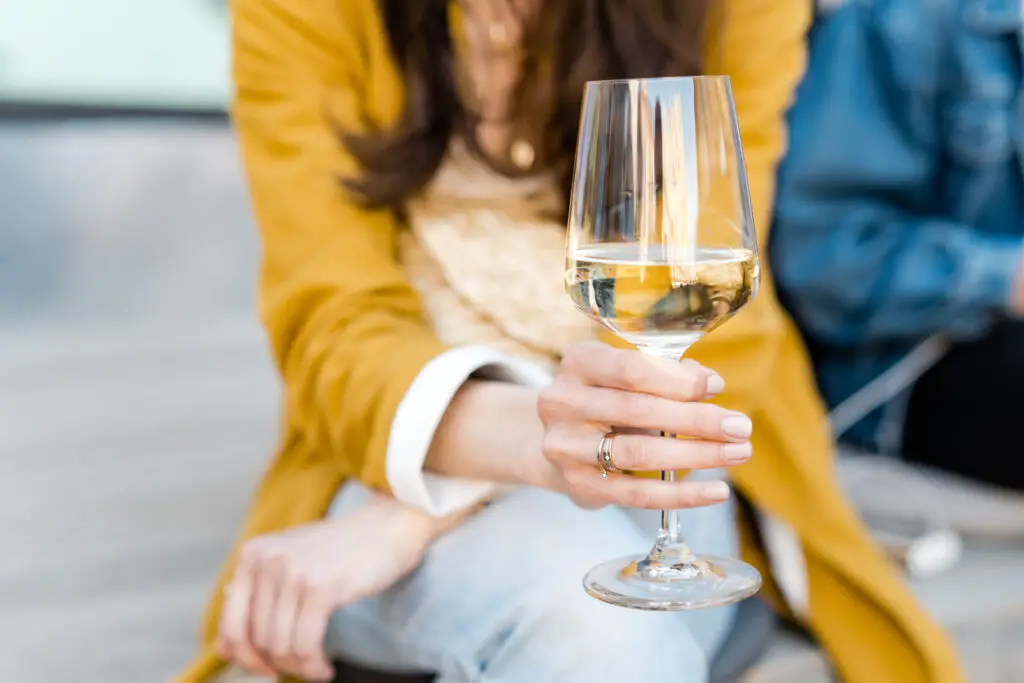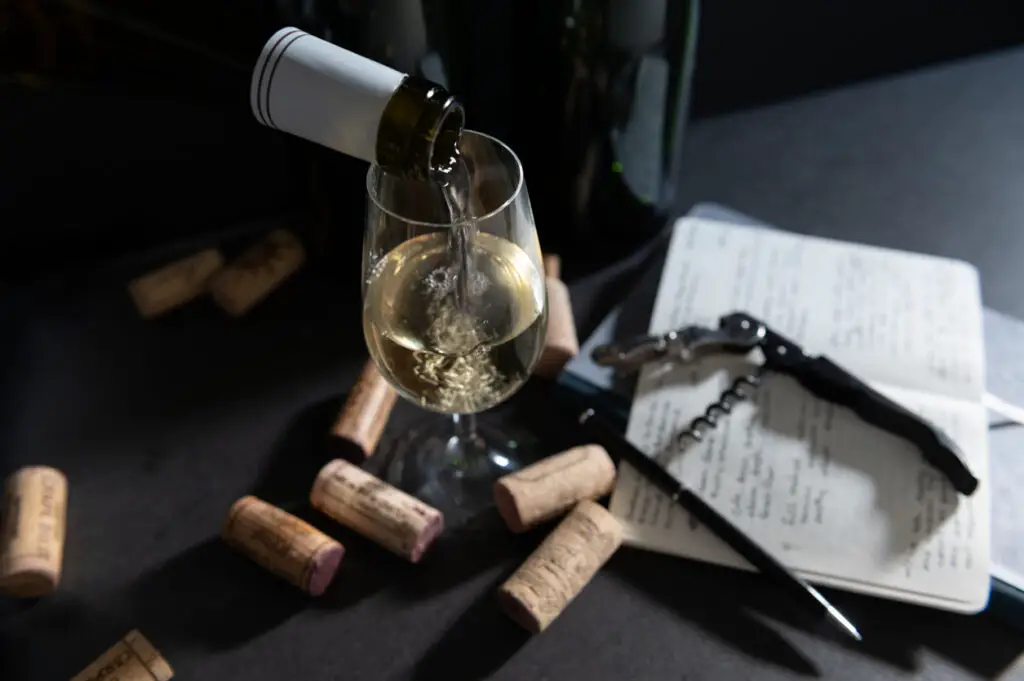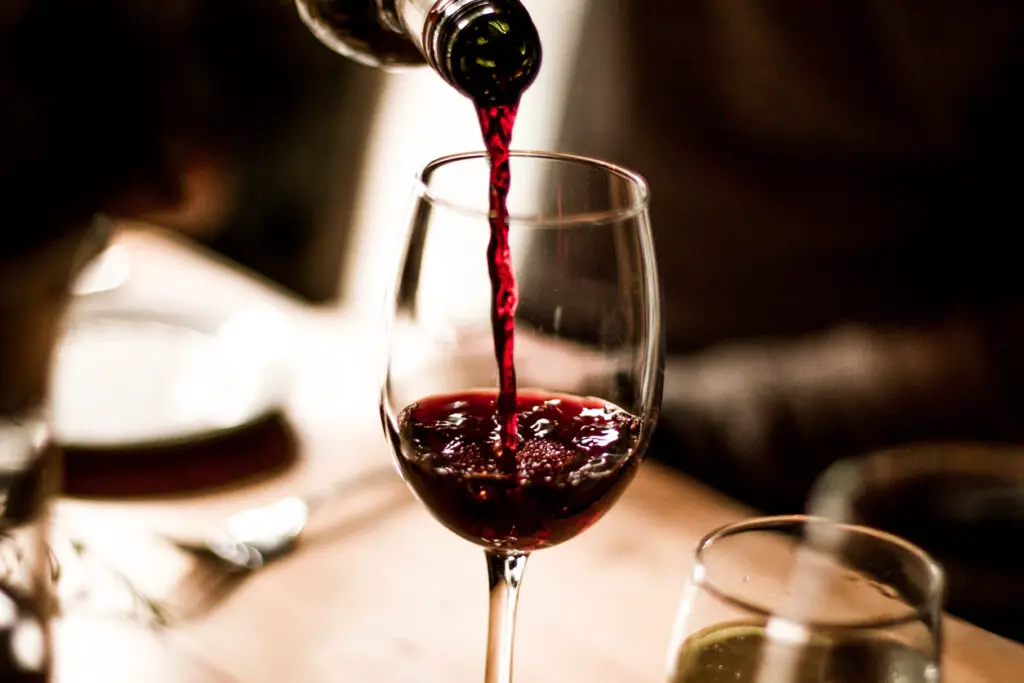If you dip your toe into the culinary scene you come across endless discussions on food and wine pairings. This a practice that has reverberated throughout history. There is no doubt that people find great pleasure by eating and drinking. Perhaps you have learned some basic rules for pairing food and wine or simply have a cheat sheet to refer to. You may have some go-to food wines and secret recipes to match. Should that same dinner wine be served before and after the meal? What if you just want to enjoy a glass of wine on its own? Maybe you like wine for happy hour or relaxing outdoors in the sun. What wine is best without food?
The best wines to enjoy without food are multifaceted and balanced. It is usually best if they are not overtly intense in any way – overpowering flavors, high alcohol, mouthwatering tartness, extreme tannin, etc. We like drinking pinot noir the most without food.
As Bob Marley says — Don’t worry about a thing. We have some suggestions for choosing a wine that can carry a tune on its own.
Enjoy What You Enjoy
There seem to be rules for everything so don’t put yourself in a box for this matter. Wine is very subjective and everyone likes different types.
There is no need to push yourself to indulge in something because people deem it appropriate. The point of drinking wine in the first place is enjoyment.
So, go ahead and drink your red wine cold (Some red wines are enhanced by a little chilling), put ice in your glass of white, or drink your bubbly in a coffee cup.
The choice is ultimately based on your preference. There are a few practical tips that can enhance your wine without food experience. Take a look below and see if they are right for you.
Multifaceted Wine Without Food

When wine plays its solo it should be entertaining enough to please the crowd. A wine that brings a pop of flavor to start and fizzles quickly leaves your palate empty will not steal the show.
Author Note: Multifaced wines that present layers of flavors, aromas, and textures captivate your senses. A great non-food wine has inviting notes that crescendo into a beautiful melody and lingers on your palate even after the finale.
Complex wines have depth and length that maintain your interest by developing layers of flavor rather than one flavor all the way through. A wine’s complexity is influenced by the particular grapes, terroir, aging process, and blend of grapes.
Think of a quality red Bordeaux that opens with aromas of black currant and plums. As you pour the silky wine into your mouth you start to taste blackberries and licorice that lead to hints of minerally graphite. From there you detect a little spice and savory components that slowly linger on the palate along with its textured tannin.
You could relate a complex wine to a concert that intrigues all your senses. It opens with aromas and flavors that gradually roll into new characteristics. There is the color, smell, taste, texture, how it feels in your mouth, and how it lingers through its finish.
An interesting wine is sure to arouse interest, but other aspects like intensity should be considered.
Wine’s Intensity Without Food
There is a reason why wine and food often do well together. Like eating something right after brushing your teeth food can change the way our tastebuds perceive the wine.
Protein in common meat pairings will calm tannic wine making it taste much smoother. Likewise, heavy cream sauces will balance highly acidic wines.
Pouring a highly tannic mouth-drying wine that leaves you constantly reaching for your water glass may not be an optimal choice on its own.
Unless you love extremely tart flavors, a stand-alone wine with bracing acidity can make your eyes water. We don’t know many people who will eat a lemon by itself.
Wines are often characterized by their body, tannin, acid, and alcohol levels. Look for options in the moderate category – medium-body, soft tannin, refreshing acid, and tolerable alcohol.
Think like Goldilock’s and the three bears – Find a wine that is just right.
Young Wines
The good news is that most wines made today are meant to be consumed young. With modernized technologies and techniques wineries have moved to making wine styles that are balanced and easy to drink.
Vineyards often focus on allowing the grapes to reach full ripeness which tames acidity. Reducing skin contact fermenting and oak aging times can result in softer tannin. Warm sunny regions are known to produce wines that don’t call for food to smooth them out.
We now know that layered wines with moderate intensity serve well without food. There are other things that can be considered for the ultimate solo wine experience.
How Weather Influences Wine Without Food

We are seasonal creatures. Our taste preferences often change throughout the year. A warming bowl of hearty chili doesn’t have the same effect on a sweltering summer day.
A heavier red wine might seem overpowering at a summer garden party yet perfectly soothing to sip under a blanket. Active summers call for lean and fresh flavors while chilly winters beg for rich and heartiness.
What if you do not like red wine – or white wine? There are red and white styles of wine that fit its unexpected season. Our advice is to experiment. You may find that you like a particular type of red wine after all.
Author Note: Many people keep it simple and choose white or rose during the summer and red for winter. However, if you dive a little deeper into the various styles of each you will find options of red wine that dances in summer and white wine that holds its own to winter.
A fresh and fruity Beaujolais has perky acidity and mellow tannin is an exciting alternative to a summer white. This wine has long been a go-to wine for celebrations and social gatherings.
A flavorful California or Australian Viognier wraps a blanket around you with its seductive texture. Cold weather has seen its match with ripe apricot and ginger notes that slide over your palate in a soft creamy way.
The temperature outside affects how you experience wine and so does the temperature inside your glass.
Wine Temperature Without Food
We know introducing food to the table will influence how our wine tastes and weather impacts what types of wines are suitable. Believe it or not, the temperature you serve your wine at will also change its character – even more so when served without food.
To achieve the optimal experience from your wines the general recommendation is to serve red wines slightly cooler than room temperature (62-68°F) and white wines slightly warmer than refrigerator temperature (49-55°F).
Here is a tip that will help you manipulate your wine to be better suited to drink without food – play with the wine’s temperature.
If you accidentally grabbed a wine that has a little too much tannin to drink on its own. Whether it is white or red let it warm up a bit. Tannin will smooth out some at higher temperatures.
A wine that seems bland and flat will develop more aromas and flavors when it is slightly warmer. If you find flaws or strong flavors you don’t enjoy, mute it by making it colder.
If your nose sizzles with alcohol try cooling it down to blunt the burn.
Enjoy bubbles? Keeping it cold will preserve the fizz.
Warm temperatures accentuate sweetness. Dial it up or down depending on your sweet tooth.
However, you decide to drink your wine don’t be afraid to try it at different temperatures to see how it changes. You can even alter it to fit the setting you are drinking it in.
The Setting of Wine Without Food

Do you enjoy day drinking or grabbing a drink after work with friends? Are you looking for a wine to serve before dinner? Looking for a wine to replace a dessert option?
Author Note: Whether it is on your own or for a large gathering, take a look at what other activities or aspects will accompany your wine. What happens before during and after you enjoy your wine might influence your choice.
Say you enjoy a little day drinking. You will likely want something that is not too strong or filling. Highly alcoholic wine will have your buzz nodding off into only zzz’s. A hearty wine that fills your tummy leaves no room to enjoy more.
Many people like to cushion their dining experience with wine. The French and Italians have mastered the ebb and flow of beverages before and after a meal since the 19th century.
An aperitif is an alcoholic beverage served before a meal to stimulate your appetite. The best wine choices enliven your senses and prepare your palate for the meal.
Other Great Options
Look for low alcohol wines that have crisp fruit, fresh floral, light herb, and refined mineral notes. Dry sparkling wine; red, white, or rose Sancerre; and dry Riesling are aperitif options that will please the crowd.
An alcoholic beverage served after a meal, called digestif, is meant to aid digestion. These are often rich, sweet, and higher in alcohol. Try one of these in place of dessert.
Port, a fortified sweet wine, is a traditional digestif that can be fruity or nutty with notes of chocolate, coffee, and toffee. Other options are Italian Amarone della Valpolicella that is rich and velvety or sweet Moscato d’Asti with its light effervescence.
Conclusion
In the end, it is always best to drink wine that you enjoy no matter what the circumstances are. However, if you choose to experiment with our tips you may find wine choices that enhance your experience.
The best wines to enjoy without food are multifaceted and balanced. Choose wines that are not overly intense in any way. Watch out for wines that have overpowering flavors, high alcohol, mouthwatering tartness, and extreme tannin. We hope you enjoyed this article on what wine is best without food.
To living a full-bodied life,
Wesley

